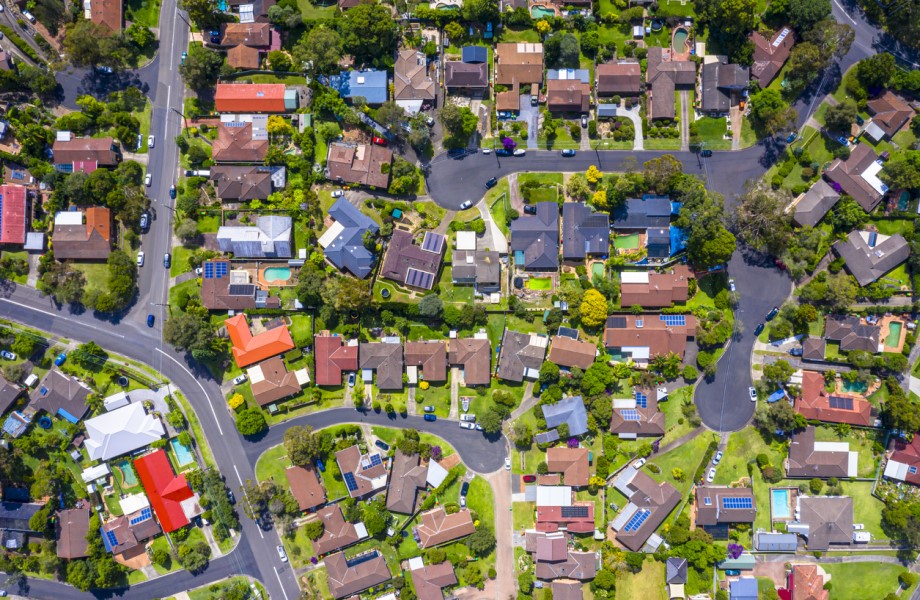
photo by theurbandeveloper.com
Sydney’s rental vacancy rates are at their lowest in five years, according to Domain’s latest rental vacancy report.
Now at 1.4 per cent, it is the lowest the NSW capital’s vacancies have been since Domain began collecting data in 2017.
The rate has declined by 0.1 percentage points since March—Melbourne followed suit, dropping to 1.7 per cent.
Compared to rates from April, 2021, all capital cities except Darwin had a decrease with Sydney down by 1.3 percentage points from 2.7 per cent.
Overall, the national rental vacancy rates have held steady at 1.0 per cent—which is also the lowest rate in Domain’s time.
“All capital cities continue to operate in a landlords’ market this month, remaining tight and highly competitive for prospective tenants,” the report said. It also predicted that the downward trend would continue.
Vacancy rate changes
| April 22 | March 22 | April 21 | Monthly change | Annual change | |
| National | 1.0% | 1.0% | 1.9% | – | ↓ |
| Sydney | 1.4% | 1.5% | 2.7% | ↓ | ↓ |
| Melbourne | 1.7% | 1.8% | 4.0% | ↓ | ↓ |
| Brisbane | 0.7% | 0.7% | 1.3% | – | ↓ |
| Perth | 0.6% | 0.5% | 0.8% | ↑ | ↓ |
| Adelaide | 0.3% | 0.2% | 0.6% | ↑ | ↓ |
| Hobart | 0.4% | 0.3% | 0.5% | ↑ | ↓ |
| Canberra | 0.7% | 0.5% | 0.8% | ↑ | ↓ |
| Darwin | 0.5% | 0.5% | 0.5% | – | – |
^Source: Domain Rental Vacancy Rates Report, April 2022
Brisbane’s figures stayed steady at 0.7 per cent with no change since March 2022, but have decreased by 0.6 percentage points from 1.3 per cent since April, 2021.
Melbourne’s figures have fallen by 2.3 percentage points from the 4.0 per cent figure of a year ago.
Perth, Adelaide, Hobart and Canberra have all seen a slight increase in vacancy numbers since March with Perth, Adelaide and Hobart increasing by 0.1 percentage points to 0.6 per cent, 0.3 per cent and 0.4 per cent respectively.
Canberra jumped by 0.2 percentage points to 0.7 per cent.
All four cities’ rental vacancies are below those of a year ago, but Canberra could return to April 2021’s 0.8 per cent figure soon.
Darwin’s figures have shown no change, remaining steady at 0.5 per cent when compared to March, 2022 and April, 2021.
Areas with highest rental vacancy rates
| Rank | Sydney | Melbourne | Brisbane & Gold Coast | Perth | Adelaide |
| 1 | Pittwater (2.5%) | Stonnington East (3.3%) | Jimboomba (1.7%) | Cottesloe Claremont (1.3%) | Adelaide City (1.1%) |
| 2 | Ku-ring-gai (2.4%) | Banyule (2.8%) | Brisbane Inner (1.5%) | Perth City (1.1%) | Burnside (0.5%) |
| 3 | Rouse Hill–McGraths Hill (2.4%) | Boroondara (2.7%) | Mt Gravatt (1.2%) | Fremantle (1%) | Unley (0.4%) |
| 4 | Blacktown North (2.1%) | Whitehorse–West (2.6%) | Sherwood–Indooroopilly (1.1%) | Mandurah (1%) | Prospect–Walkerville (0.4%) |
| 5 | Ryde–Hunters Hill (2%) | Stonnington West (2.6%) | Brisbane Inner-West (1%) | Melville (0.8%) | Campbelltown (SA) (0.3%) |
^Source: Domain Rental Vacancy Rates Report, April 2022
HIA chief executive for industry policy Kristin Brookfield said the tight rental markets were a concern for renters.
“While new home building activity has increased, there continues to be a shortfall in private rental housing to meet demand,” Brookfield said.
“The outcome of a shortage in supply is an ever-growing increase in demand for both social and affordable rental housing across Australia.”
The RBA on Tuesday raised the cash rate 25 basis points to 0.35 per cent, the first time hike since 2010, creating concern around how people would pay mortgages and rents. New borrowers in Sydney are facing a potential increase of $1000 per month on their mortgage repayments.
Finance Brokers Association of Australia managing director Peter White said there was already concern about whether renters and homeowners could meet rising costs.
Areas with the lowest rental vacancy rates
| Rank | Sydney | Melbourne | Brisbane & Gold Coast | Perth | Adelaide |
| 1 | Blue Mountains (0.4%) | Sunbury (0.3%) | Nerang (0.2%) | Kwinana (0.3%) | Onkaparinga (0.1%) |
| 2 | Camden (0.5%) | Yarra Ranges (0.3%) | Strathpine (0.2%) | Mundaring (0.3%) | Gawler–Two Wells (0.1%) |
| 3 | Campbelltown (NSW) (0.5%) | Cardinia (0.4%) | North Lakes (0.2%) | Kalamunda (0.3%) | Tea Tree Gully (0.1%) |
| 4 | Sutherland–Menai–Heathcote (0.5%) | Casey–South (0.6%) | Narangba–Burpengary (0.2%) | Gosnells (0.3%) | Marion (0.1%) |
| 5 | Richmond–Windsor (0.5%) | Knox (0.6%) | Robina (0.3%) | Rockingham (0.4%) | Adelaide Hills (0.1%) |
^Source: Domain Rental Vacancy Rates Report, April 2022
“Fifty-seven per cent of people paying a mortgage or rent [in a FBAA survey] said they could “not at all” afford a $300-per-month increase, and this is an increase equivalent to only 1 per cent based on the average home loan,” White said.
“Seventy-five per cent of those surveyed said rising interest rates would put pressure on their financial position while 56 per cent said they would need to look at refinancing their home.”
